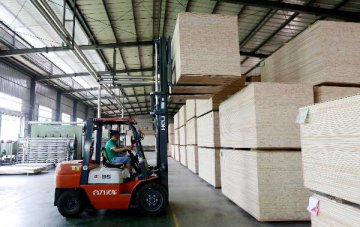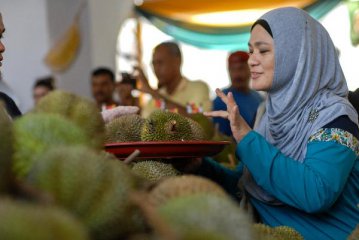Malaysia's economy rose 4.4 percent in the third quarter, as private consumption expanded strongly following the rolling-back of Goods and Services Tax (GST) during the quarter, central bank said Friday.
Malaysian Central Bank's governor Nor Shamsiah Mohd Yunus said in a statement Friday that the country is on track to register a growth of 4.8 percent this year as it grew by 4.7 percent in the first three quarters.
Strong consumer spending, business and consumer sentiments, expansion in manufacturing production capacity will continue to support the growth this year, but prolonged disruptions in commodity production will weigh on the growth, she added.
Private sector activity continued to be the primary driver of growth in the third quarter, with household spending surged 9 percent year-on-year, private investment increased by 6.9 percent.
On the supply side, services and manufacturing grew 7.2 percent and 5 percent respectively; the construction sector also expanded by 4.6 percent.
The mining and agriculture sectors, however, contracted 4.6 percent and 1.4 percent respectively, dragged by production disruption.
Meanwhile, gross exports grew 5.2 percent, as higher electrical and electronics (E&E) exports mitigated the decline in commodity exports.
Going forward, export growth will remain supported by continued demand from major trade partners, higher production capacity especially for E&E, recovery of commodity output, said Nor Shamsiah.
She expects the country's current account to remain in surplus going forward, supported by global demand and commodity exports.
In the first three quarters, Malaysia's current account registered a cumulative surplus of 22.7 billion ringgit (5.41 billion U.S. dollars).
Malaysian Central Bank's governor Nor Shamsiah Mohd Yunus said in a statement Friday that the country is on track to register a growth of 4.8 percent this year as it grew by 4.7 percent in the first three quarters.
Strong consumer spending, business and consumer sentiments, expansion in manufacturing production capacity will continue to support the growth this year, but prolonged disruptions in commodity production will weigh on the growth, she added.
Private sector activity continued to be the primary driver of growth in the third quarter, with household spending surged 9 percent year-on-year, private investment increased by 6.9 percent.
On the supply side, services and manufacturing grew 7.2 percent and 5 percent respectively; the construction sector also expanded by 4.6 percent.
The mining and agriculture sectors, however, contracted 4.6 percent and 1.4 percent respectively, dragged by production disruption.
Meanwhile, gross exports grew 5.2 percent, as higher electrical and electronics (E&E) exports mitigated the decline in commodity exports.
Going forward, export growth will remain supported by continued demand from major trade partners, higher production capacity especially for E&E, recovery of commodity output, said Nor Shamsiah.
She expects the country's current account to remain in surplus going forward, supported by global demand and commodity exports.
In the first three quarters, Malaysia's current account registered a cumulative surplus of 22.7 billion ringgit (5.41 billion U.S. dollars).






















Latest comments